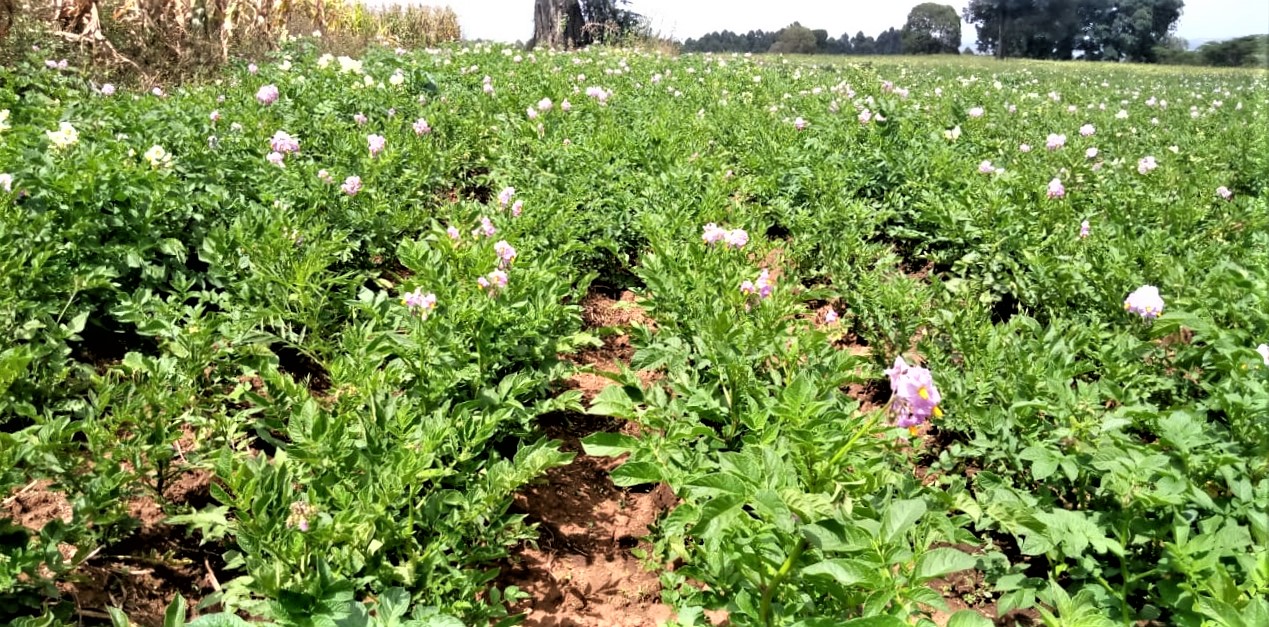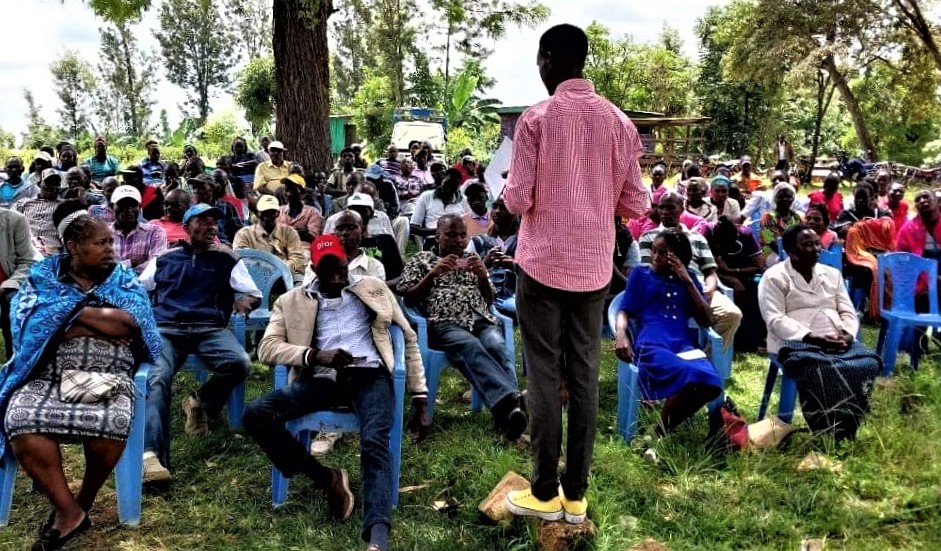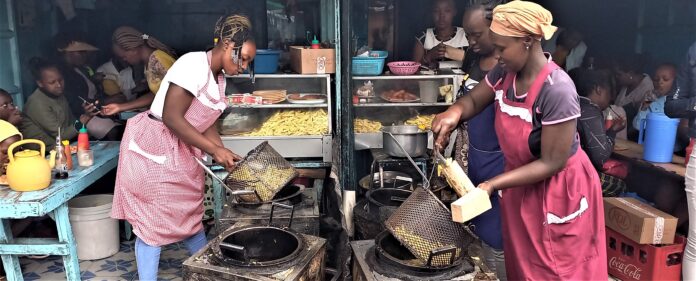By Daniel Kipchumba
Nakuru County, Kenya: Joseph Mwangi a potato farmer in Njoro Nakuru county, has grown potatoes on his farm for commercial purposes for over ten years and attests that the vagaries of climate change have adversely affected his venture.
“Unpredictable rainfall pattern has affected farming, especially potatoes, for the ten years that I have been growing potatoes, rainfall patterns have been slowly becoming erratic, thus affecting the production. I used to produce one hundred bags of potatoes before but now, I can barely harvest even fifty bags from the same acres.” Mwangi says.
Traditionally, farmers have depended on rainfall to support agriculture, but as the years go by rainfed agriculture has proven untenable. Mwangi’s predicament is shared by Thairu Mbugua in Nyandarua 126 KM away from Njoro, Thairu has been growing potatoes for over five years now, and also attests to harsh times affecting this farming that he has been depending upon for years on.

“The unreliable rainfall has been playing tricks with us for the past few years, we use to time it very well for planting but now it’s difficult to do so because it’s never predictable.”Mbugua says.
This has affected farmers, business people, and traders who depend on potatoes. Wangari Maina, an eatery business lady running her chips business in Nakuru City has come face to face with the effects of reduced potato production.
“The challenge that we have right now is the price of a sack of potatoes, it’s costly for us compared to the profit expected, and when you try to recoup it through reduced servings, the customers complain therefore the burden is left on our shoulders.”Wangare says as she turns the frying chips.
In the same city is Wanjiku Kimemia, a retail potato trader in Nakuru’s main market, the effects have not spared her either, the high wholesale prices and small size of potatoes have pushed her to the edge eating into her profit.
“The wholesale prices are ridiculously high and even the size of the potato has significantly reduced over the years, you try to pass that to the customers they complain and leave, so instead of losing your customers by giving the cost to them, you end up shouldering a part of it hoping for Climate change has become a concern in the last few decades all over the world.”
Climatic changes like unreliable rainfall have negatively affected people and plants in different ways and have dangerously impacted food production thus endangering human survival on earth and pushing animal and plant species to extinction.
Over the years, Potato farmers in Nakuru County have witnessed dwindling farm production, due to erratic rainfall patterns, which experts attribute to climate change. This in itself threatens food security in Kenya. a better future.
Year after year climate change has proven that rain-fed agriculture is becoming more difficult therefore need to embrace other forms like irrigation. Maurice Simiyu agricultural extension officer based in Njoro advises farmers to embrace water harvesting and storage to beat the effects of climate change in agriculture.

“Farmers should come together in groups and dig water dams to collect runoff water to be used in irrigation or sink boreholes to sustain them when the rainfall fails, this will greatly help otherwise if they continue depending on rainfall things will be tough for them,” Simiyu says.
The idea of harvesting rainwater for irrigation is slowly sinking into farm life. It is an idea embraced by Joseph Mwangi who says since he did he now has peace of mind and spends less paying tap water bills.
“I have invested in several water tanks on my farm that store water for irrigation, now I am not afraid of dry spells and hue tap water bills eating into my income. I would advise my fellow farmers to embrace the same they should come together as a group to cost share and make it affordable for everyone.”Mwangi says.
In Kenya, the drought situation remained critical in twenty of the 23 Arid and Semi-Arid Land counties during the month of November 2022. This is attributable to four failed rain seasons coupled with the delayed onset of the October, November, and December 2022 rains in most parts of the Arid and Semi-Arid areas.
The impacts of the sustained drought situation have seen the number of people requiring humanitarian assistance stand at 4.35 million. Risks of Acute malnutrition continue to be reported in Arid and Semi-Arid areas counties where 942,000 cases of children aged 6-59 months and 134,000 cases of pregnant or lactating women acutely malnourished continue to access treatment.
This comes in the backdrop of a World Food Program Report global hunger crisis in 2022 that as many as 828 million people go to bed hungry every night. The number of those facing acute food insecurity has soared – from 135 million to 345 million – since 2019. A total of 49 million people in 49 countries are teetering on the edge of famine.














